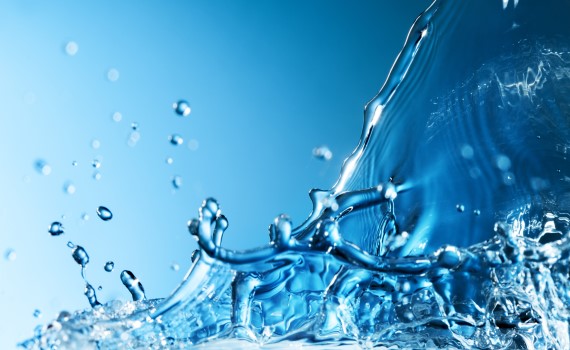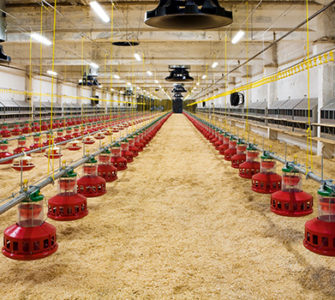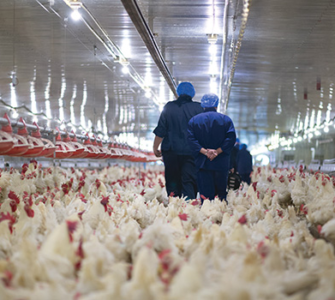Water quality: No room for error in NAE flocks
By Tom Tabler, PhD
Extension Professor
Mississippi State University Extension Service, Poultry Science Department
Mississippi State, Mississippi
Most US poultry producers make sure contract growers have a drinking-water supply that meets bird needs. Generally, they require minimum water flow rates from wells or community water systems. Few producers, however — if any — have recommended water-quality standards for their flocks.
This was the case in the early 1980s when I was a broiler service technician in southwest Arkansas, and it’s still true today. Even though water is the most important nutrient for chickens and despite the fact that chickens consume basically twice as much water as feed, water receives the least attention. As long as there’s enough water when chickens want a drink, we give little thought to water quality.
In the 1980s, I was often asked if the cost of installing a water-treatment system to fix poor-quality water would pay off in improved bird performance. Back then, the answer was “no,” unless the water was absolutely terrible. Today, the answer may have to be “yes” due to the “no antibiotics ever” (NAE) trend, which has led to the loss of gentamicin at hatcheries, as well as the elimination of antibiotics and some anticoccidials in broiler feed.
For years, I’ve gotten calls every month asking if I can come down to look at a farm that’s having performance issues and maybe pull a water sample to see what’s going on. Those calls have increased considerably with the increase in NAE production. I believe producers are seeing more health issues with NAE flocks because, in the past, antibiotics were able to mask or compensate for numerous water-quality issues. With NAE production, companies and growers are now realizing that water quality plays a much bigger role than it was given credit for in the past.
Underlying issues revealed
NAE production is teaching us that a tiny bit of antibiotic at the hatchery and in the feed covered up a plethora of “less-than-stellar” management practices. Those shortcomings are now coming home to roost (no pun intended). NAE programs are revealing underlying issues that were either unrecognized before or were known but considered unimportant. With a little help from antibiotics, some bacterial issues were largely unimportant — but those days are gone.
Good water quality is critical to efficient broiler production. It’s important that every grower monitors daily water consumption and makes sure that consumption increases over time. If consumption plateaus or decreases at any point during production, the problem needs to be addressed immediately. Water intake does not go down unless something is wrong. The culprit might be flock health, the house environment, a feed change, the management program — or it could be the water quality.
How will water quality show its hand in NAE flocks?
- Poor flock performance
- Increased enteric issues
- Disease problems flock after flock
- High mortality
- Low water consumption
- Loose droppings and wet litter conditions
Maybe there’s a heavy microbial load in the water. Perhaps the pH is too high or too low. Maybe there are excessive mineral concentrations. Whatever the problem, water quality must receive greater attention in an NAE world. The problem can vary greatly depending on the aquifer your well is tapped into. For example, in Mississippi I’ve seen low pH (<3), high pH (>8.5), high iron, sulfur, magnesium, sodium, chloride, etc. It all depends on your water supply.
Supplements can affect water quality
Consider the widespread use of supplements in NAE flocks used to offset the loss of antibiotics. They include probiotics, prebiotics, eubiotics, organic acids, essential oils, vitamins, minerals and electrolytes. While they may have some health benefits, there are a couple of downsides to their use. For one, they can provide an energy source for bacteria, mold, fungus, yeast and algae. Pretty much anything we run through the water system to improve bird health will likely improve the health of all these other little critters as well. Soon we have stuff growing in our water lines that can harm the flock and offset all the good the supplements may do.
If you run supplements, you must have a thorough water-line cleaning program (with and without birds on the farm). Otherwise, regardless of how clean your water source is, you are going to grow things in your water lines that can harm your chickens (biofilms, pathogens, etc.)
Probiotics are live microorganisms. While they may have health benefits, you are basically adding bacteria to the water line. Granted, these are good bacteria, but they can still clog your drinker system.
Prebiotics are carbohydrate or plant-source nutrients used to enhance growth of bacteria in the gut. When given in water, they will enhance growth of bacteria in your water line.
There are a variety of essential oils or combination of essential oils used by many companies as a natural alternative to antibiotics. While their performance may vary from location to location, one thing is always true — they are all slimy, sticky oils, and if delivered through the water system, they can be extremely difficult to remove from water lines.
One way to combat poor water quality is with a two-part water-treatment line-cleaning plan. I recommend:
- Cleaning water lines when houses are empty so you can use stronger products than what you use with birds in the house. Just be sure to check with your drinker manufacturer to make sure the product is safe to use in their drinkers.
- Treating water when birds are on the farm. This is particularly important the first 2 weeks of the flock when warm, slow-moving water is in the drinker lines because birds are small and not drinking much. It’s also important after you run supplements through the water system to remove any residue that bacteria may use as a food source.
Well water: It’s less than pristine
Besides supplements adversely affecting water quality, consider the quality of the water as it comes out of the well. In my experience, the water most flocks get is less than pristine.
Take pH, for example. There’s a lot of bad-pH water in Mississippi where I work. I have lab reports in my files of poultry drinking water with a pH ranging from 2.87 to 8.63. The acceptable range for poultry is between 6.5 and 7.8. Long-term exposure to a pH below 5 can cause the metal components of drinker equipment to corrode. So, what do you suppose that water does to the chicken’s intestinal lining and its ability to absorb nutrients?
Conversely, a pH above 8 affects the effectiveness of most water sanitizers and, if associated with high alkalinity, may cause a bitter taste resulting in reduced water consumption. Reduced water consumption means reduced feed consumption — and poor performance. A pH that’s too low or too high can often be fixed with the right injector system. Baking soda or soda ash can raise a low pH. Apple cider vinegar, citric acid or muriatic acid can lower a high pH.
High levels of magnesium (>125 ppm) can cause flushing due to a laxative effect, particularly when combined with high sulfate levels (>200 ppm). Sulfates can also cause flushing. High nitrate levels (>25 ppm) can result in poor growth and feed conversions and may also be an indicator of fecal bacteria. Like pH, most high-mineral problems can be fixed. However, it usually takes the right filtration system, and it’s impossible to know what that filtration system should be unless you know first what’s in your water.
If a rotten egg odor is present in your water, then you likely have hydrogen sulfide-producing bacteria. You may not only need to clean the water system, you’ll want to consider shock-chlorinating the well in addition to establishing a daily water-sanitation program.
In summation, I’m seeing more interest in water quality because of NAE production. Before NAE, we tended to disregard quality as long as quantity was adequate. Water quality, however, is one of those underlying issues we can no longer overlook.
The consequences of poor water quality are just too great to ignore. If you are having issues with disease, feed passage, weight gain, feed conversion, wet floors or performance, test your water and take corrective action if necessary. Today’s NAE programs are not forgiving — and poor-quality drinking water is a serious mistake.
Editor’s note: The opinions and advice presented in this article belong to the author and, as such, are presented here as points of view, not specific recommendations by Poultry Health Today.
Posted on August 13, 2019

















